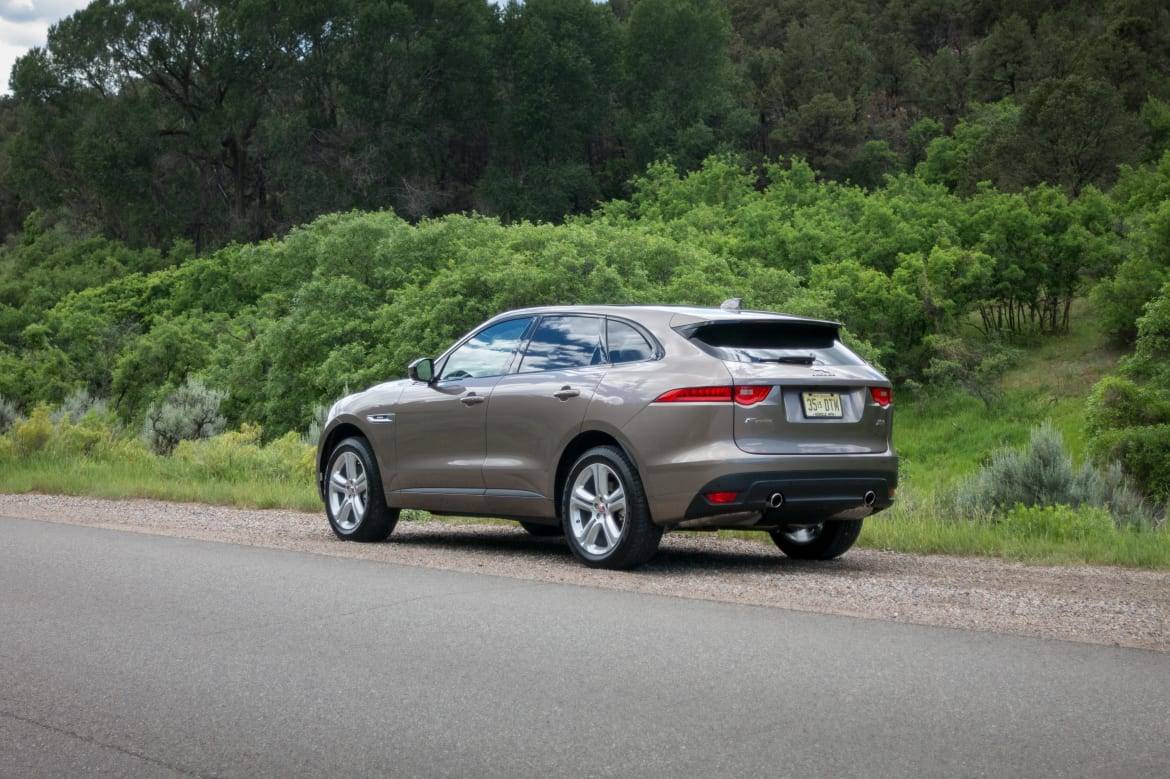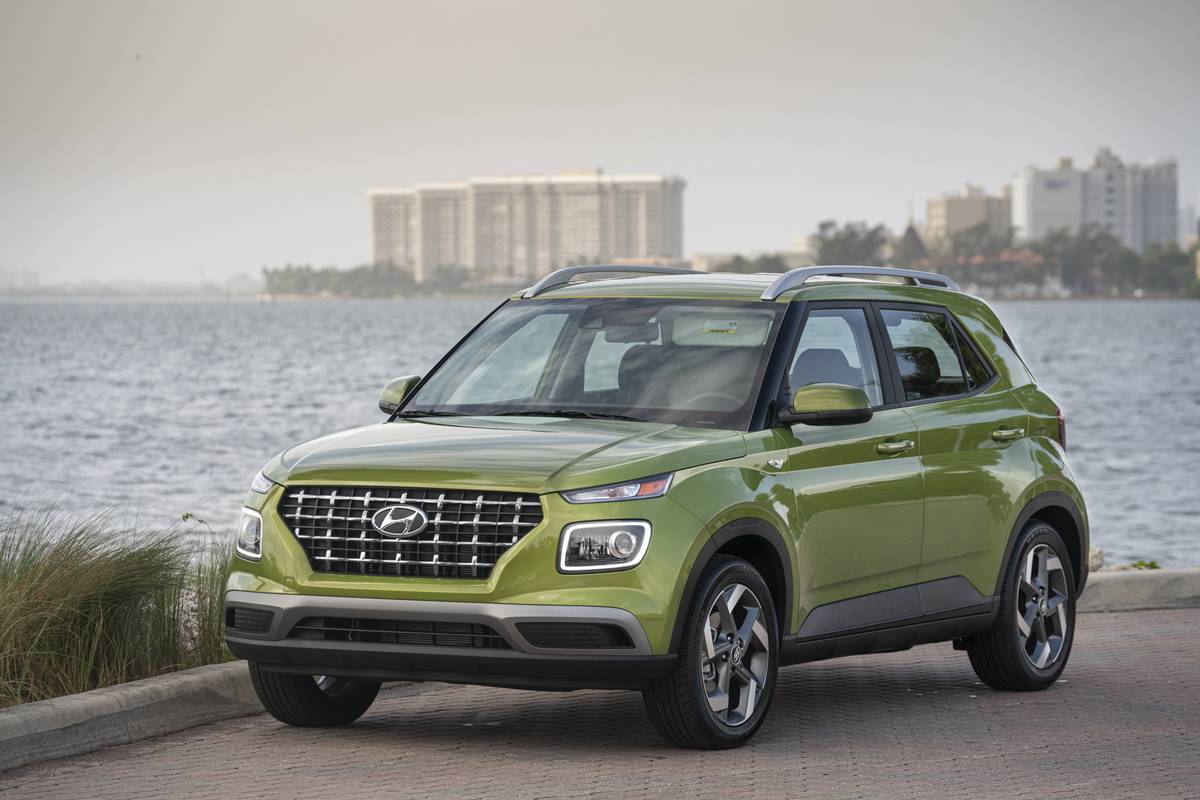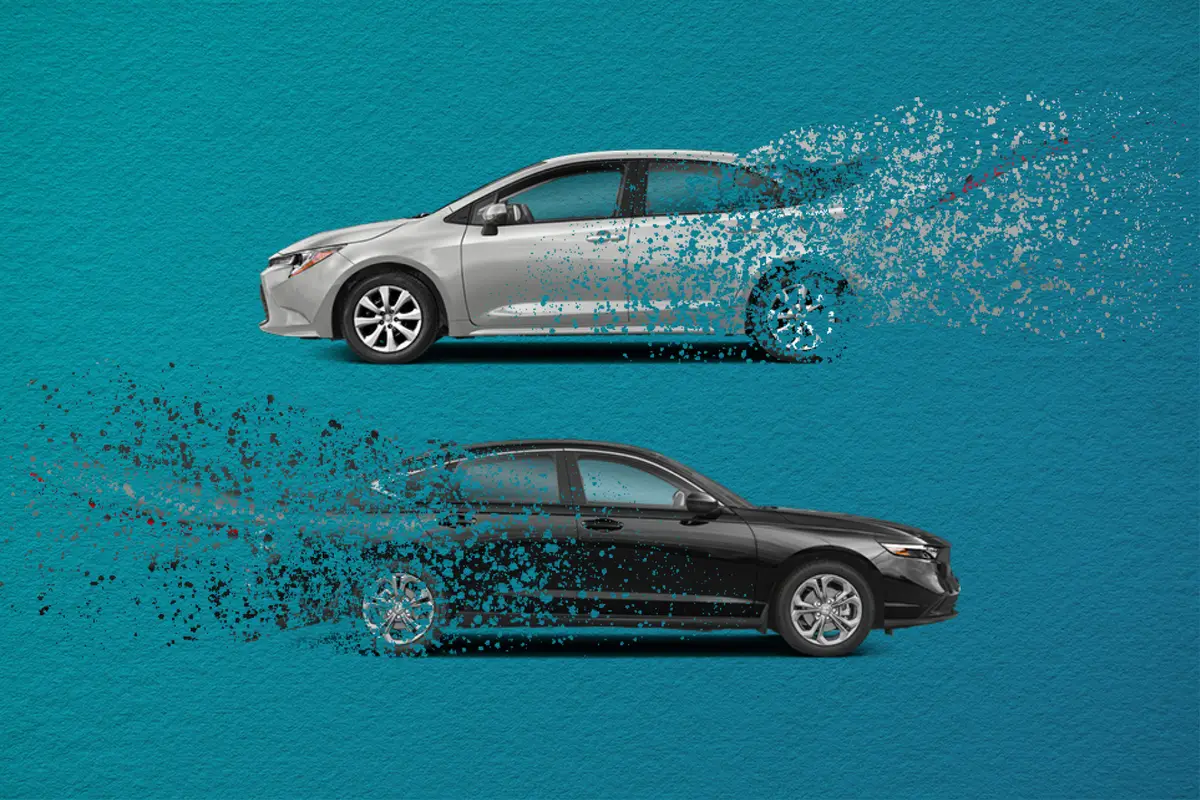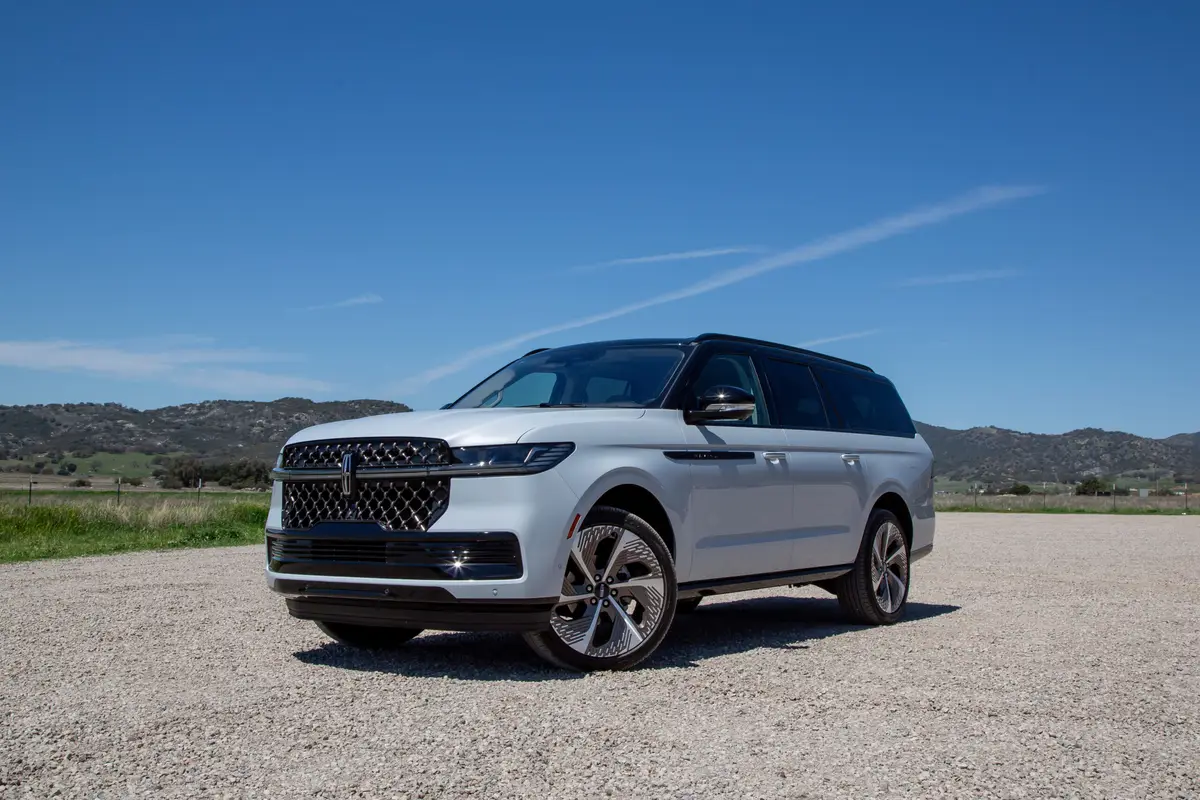2017 Jaguar F-Pace Review: First Drive


CARS.COM — Jaguar struck while the iron was hot, launching its first SUV as consumer demand for the body style soars. The smithy served up some fine metal indeed: The new F-Pace is a handsome five-seater with enough performance and utility to overcome a few annoyances.
Related: 2016 Jaguar XF: First Drive
It’s bizarre — from a financial standpoint, anyway — that Jaguar wouldn’t just sculpt and rebadge an SUV from Land Rover, its sister brand that builds many acclaimed SUVs. (India’s Tata Motors owns both British marques.) But officials at the F-Pace press launch I attended in Colorado insisted that Jaguar never considered a version of the Range Rover Sport or Evoque as the whole gamut of Land Rovers was simply incapable of driving like a Jag.
As billed, the F-Pace does, in fact, drive like a Jaguar. Developed on the same platform as the all-new XE and redesigned XF, it’s as fun to drive as you’d expect from a brand known for roadsters and sport sedans.
On sale now, the F-Pace slots between compact and midsize rivals (think BMW X3 and X5 or Mercedes-Benz GLC- and GLE-Class) in overall length, with a price that puts it closer to the smaller set. All-wheel drive is standard, and the F-Pace comes in six trim levels with a supercharged 3.0-liter V-6 that makes 340 horsepower or, in the top two trims, 380 hp.
How It Drives
The F-Pace’s supercharged V-6 pulls the SUV swiftly up to speed with just a hint of coarseness if you push it all the way toward redline. I drove both versions of the V-6 and the extra 40 hp — a tuning modification, Jaguar says, with no difference in torque — is hard to detect. Both versions deliver punchy acceleration and Jaguar’s zero-to-60-mph claims (5.1 to 5.4 seconds, depending on engine) are entirely believable. Those numbers are sport-sedan quick and impressive for a base gasoline engine.
The accelerator responds immediately, enabling lag-free movement from a standstill — an unsung benefit in many Jaguars considering the lag rampant in too many luxury cars. Still, the F-Pace’s eight-speed automatic occasionally hunts on downshifts; driver-selectable sport modes quell some of this but transmissions should be responsive without having to futz with settings.
Ride quality is firm but livable, with limited body motion over rapid elevation changes. The suspension neutralizes individual bumps well enough but broken pavement brings a busy sensation that can wear on you. I drove cars with both the fixed suspension and an adaptive option but didn’t detect a huge difference between the two.
For the average luxury SUV shopper, the F-Pace’s handling should satisfy. The SUV delivers secure grip, flat cornering and direct enough steering, but its significant width — 85.6 inches, nearly 10 inches more than an X5 — will keep you from wanting to sling it around tight corners. The brakes require an inch or two of pedal travel before much response but they’re strong thereafter.
Later this year, Jaguar will debut a base turbocharged diesel four-cylinder that’s good for 180 hp and 318 pounds-feet of torque. EPA-estimated mileage is 18/23/20 mpg city/highway/combined.
Outside & In
With Jaguar’s squinting headlights, tall grille and signature taillights, the F-Pace fits right in with the rest of the lineup. Lineage aside, it has all the cues of a performance SUV: a high belt line, long hood, short overhangs and wide stance.
Naturally, the profile robs visibility. Forward sight lines are acceptable, but the belt line and roofline converge on a small rear window that limits the rearward view even if you flip the rear head restraints down.
The cabin sweeps around in a traditional cockpit orientation but it’s wide enough to avoid feeling pinched; Jaguar also left some well-placed storage areas to hold a smartphone or two. Cabin materials show some cost-cutting below arm and elbow level — areas where the GLC-Class excels — but they’re nicer elsewhere, with an optional vinyl-wrapped dashboard that could pass for real cowhide.
I can’t say the same for the F-Pace’s Luxtec vinyl upholstery, which is standard in lower trims, as is the norm in this class. It’s a rubbery, cheap-feeling substitute for real leather, which comes in higher trims. (Not all vinyl upholstery feels this way; it’s a convincing alternative in some luxury cars.) Power-adjustable front seats are standard; sport seats with deeper bolsters are all optional, as are heated and ventilated seats.
The three-position backseat has good headroom and legroom but a somewhat low seat height; some adults may find their knees uncomfortably elevated. All rear passengers will be annoyed in the F-Pace’s lower trims, which lack a center armrest or any rear cupholders. C’mon, Jaguar. Let the masses have their Big Gulps.
Heated outboard seats with power recliners are optional. Behind them, the F-Pace’s cargo area has 33.5 cubic feet of space below window level, which is impressive for the class. The backseat folds in a 40/20/40 split to provide 63.5 cubic feet of maximum cargo room. A power liftgate is standard; hands-free operation is optional.
Multimedia & Gadgets
The F-Pace has a standard Meridian stereo with HD radio, USB and iPod compatibility, and Bluetooth phone and audio streaming. It’s easy to use thanks to physical shortcut keys that flank the standard 8-inch touch-screen. There’s also a 5-inch display between the analog gauges.
An optional multimedia system adds upgraded Meridian audio; it also swaps the gauges for a 12.3-inch virtual instrument cluster. The screen can simulate various gauge themes or show a navigation map similar to Audi’s virtual cockpit (though the Jaguar display lacks Audi’s Google Earth overlays). It also trades the 8-inch dashboard touch-screen for a 10.2-inch unit that eliminates the shortcut keys. I prefer those keys to the larger display’s onscreen ones but the system is otherwise an upgrade — especially with its navigation system, the pinch and swipe capabilities of which work at smartphone speed. You can still get navigation with the 8-inch display but it’s a slow, yesteryear system by comparison.
Jaguar says its dedicated InControl Apps interface, also optional, integrates third-party apps from a connected iPhone or Android smartphone. Still, the F-Pace doesn’t offer Apple CarPlay or Android Auto, two interfaces that are fast becoming the price of entry for any multimedia system.
An optional waterproof wristband transponder, which Jaguar calls Activity Key, gets you into or out of your car without the normal remote. The embedded RFID tag means it’s battery-free and, as part of the locking process, deactivates any remotes you leave inside the car while you surf, swim or whatever. Way cool, brah.
Overall Value
The F-Pace starts around $42,390 right now but the diesel version will reduce that by about $1,400 when it goes on sale. The equipment has some head-scratchers: A panoramic moonroof and all-wheel drive are standard but a backup camera and rear cupholders cost extra. The bottom three trims (a group that makes up more than half of all the new F-Pace inventory on Cars.com) lack forward collision warning with automatic emergency braking, a feature the GLC-Class has standard.
Still, somewhere between that starting price and the F-Pace’s high-$70,000s ceiling, the SUV should appeal to any performance SUV shoppers, especially with the Jaguar’s impressive warranty and maintenance coverage. There’s no doubt Jaguar will cannibalize a few shoppers from its Land Rover sibling but the F-Pace should get a piece of the luxury SUV pie nonetheless — and much of it from other brands.











































































Former Assistant Managing Editor-News Kelsey Mays likes quality, reliability, safety and practicality. But he also likes a fair price.
Featured stories



2025 Lincoln Navigator Review: Elephantine Elegance






































